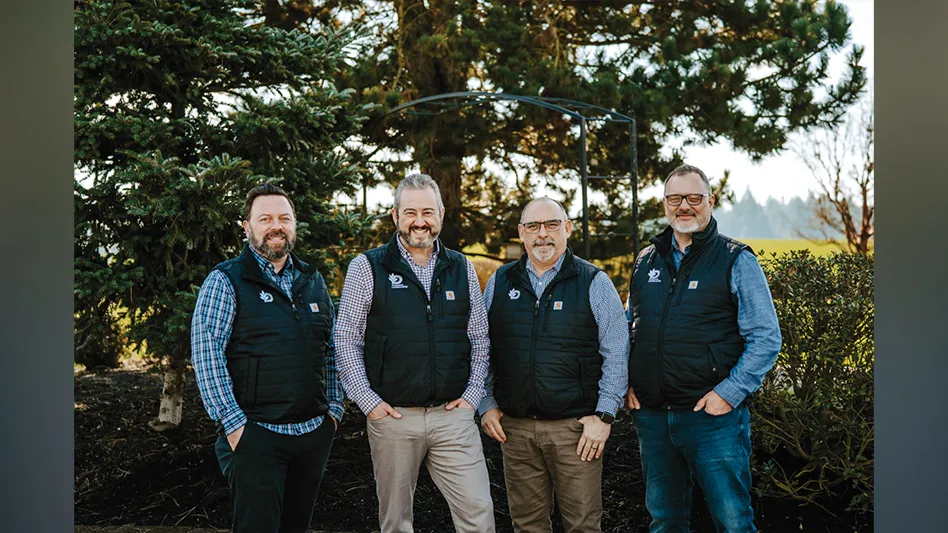Natural but polished. This look defines the landscapes designed by Jim Lesti, senior landscape architect and creative design director for Scapes in Marietta, Ga. His sophisticated, eye-catching creations certainly are derived from his own artistry and inspiration, but they’re influenced in a way by a brand, a look for which Scapes is known.
“I don’t think I’d ever sacrifice the Scapes look,” Lesti says. “The minute I thought my design wouldn’t look like a Scapes design and would become mediocre, I don’t think we’d be the right company for the job. Sometimes that happens.”
The Scapes look he speaks of is organic but tidy – large plants for instant impact and sweeping, curvilinear bed lines and tight groundcovers for a finished feel. This look is embraced in the landscape-savvy Atlanta market. “People here are well-traveled,” Lesti says. “They’ve seen bad design and good design and they appreciate spending the money for a good company with good designers.”
Lesti has a handle on design preferences in various markets – he’s worked in four of them. Fresh out of college, he joined a Brickman design/build branch in Philadelphia. After two years there, he made the switch to a design-only firm. “I wanted to try to get both sides of things,” Lesti says. The transition to a Pittsburgh-area design house was a drastic one. “It was very urban, very commercial. I realized I enjoyed designing ‘people spaces.’” After moving back to Cleveland and into a design/build role at The Pattie Group for a few years, Lesti had an itch to move south. In 1997 he landed at Lifescapes, which became Scapes, where he works today.
In addition to achieving a certain “look” and staying within budget, balancing form and function is a challenge Lesti takes seriously. Aesthetics are important, he says, but making the most of a homeowner’s space should be No. 1. “I feel that architects are so far ahead of us in designing spaces for people’s use,” Lesti says. Residential architects analyze how people spend their time and move around their houses. “As landscape architects we need to do the same thing outside. We need to ask, ‘How are people using these outdoor living spaces?’” Designers shouldn’t merely specify an outdoor grill, he says, but should consider incorporating counter and buffet space to create cooking stations. They should create pools that accommodate sunning areas and shade structures, possibly with ceiling fans.
At Scapes, one way Lesti and his colleagues foster a design dialogue and share ideas is with an annual design tour in the early spring. “I think the No. 1 mistake designers make is never going back into the field to see what they’ve designed,” Lesti says. “If you don’t go out and see how it turned out, how do you really know it was a good design? You don’t know what plant combinations look good, what types of paving or what size spaces look good unless you go out there and see the space.”
Each Scapes designer has at least one property he or she designed the previous year on the tour. This process, which allows designers to review each other’s work, has become as much about reinvigorating the group’s enthusiasm as it is about technical takeaways, Lesti says. “It makes people get excited again. You get to see each other’s ideas and take home their creative outflow. You come back in the office and say, ‘What we do is pretty cool.’ You can really learn from others.”
What, then, has he learned from these experiences?
“As I grow in my career,” Lesti says, “I’m realizing that most of the time the best designs are very simple – elegant yet bold.”

Explore the March 2007 Issue
Check out more from this issue and find your next story to read.
Latest from Lawn & Landscape
- Echo reveals blowers, mowers and more at Power-On-Athon
- Lake Zurich mayor honors Echo as green business
- Echo's sustainable regrind process
- Green Lawn Fertilizing/Green Pest Solutions names Willey as president
- ASV debuts VT-80 compact track loader
- Luke Williams joins Focal Pointe as CFO
- Ford debuts 2025 Ford F-Series Super Duty
- TCO for trimmers and edgers





